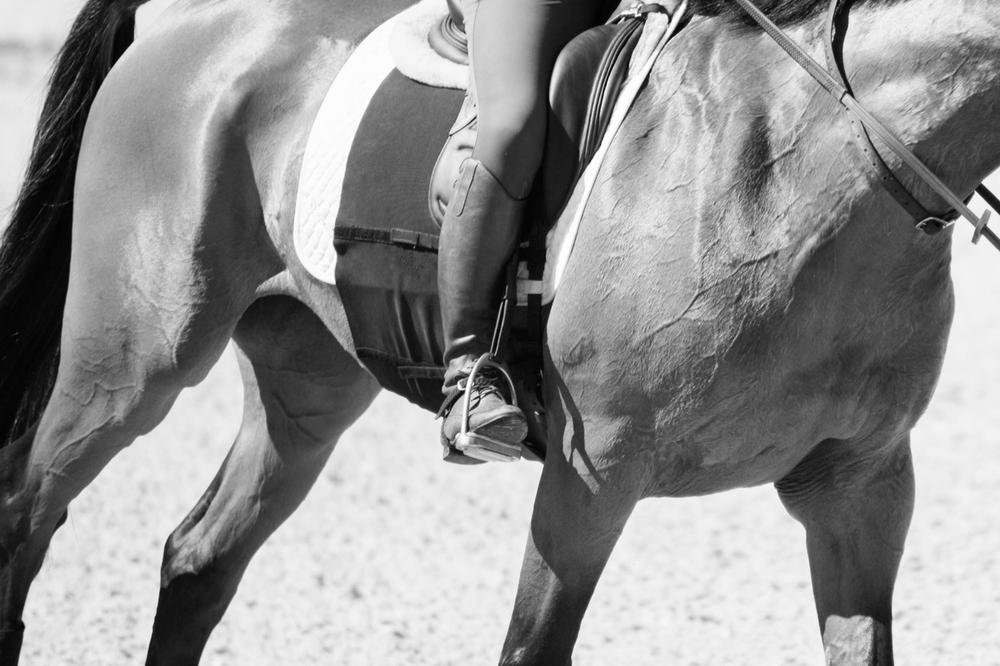Belly Bands Are A Dumb Trend

Belly bands – have you heard of them? Also known as “spur guards”, these neoprene or elastic wraps go around the girth and underbelly area of the horse. Don’t confuse these soft, stretchy wraps with the ones that are used to develop core strength. Many riders use belly bands to hide or keep from creating spur marks on the horse’s side.
This device is a relatively new phenomenon in equestrian sport. They’re illegal in FEI level dressage, British Dressage and the American Quarter Horse Association, among other organizations. And rightfully so. It is approved for use in show jumping.
The FEI’s blood rule exists for a reason: riders can be eliminated from competition if show stewards see signs of blood on the horse, most commonly in the mouth or near the sides of the barrel from spurs. Hence the interest in using something like a $100-plus piece of fabric to prevent any abusive marks.
So it’s no wonder belly bands can be as controversial as draw reins.
Sure, some horses have sensitive skin. They may show more rubs and marks than others. Some may even be prone to rubs from riders’ boots or girth-fit alone. But there are options out there for managing a problem like this. Most of them come down to proper education and horsemanship.
Opting for a belly band feels like the quick-fix solution for somebody too impatient to learn how to ride the right way.
Don’t take my word for it. How about legendary eventer, Lucinda Green? She told Horse & Hound that she’d never considered using one. Instead, she recommends that riders take “the horse for some fun hacks, then maybe it will start to go forward with a little more lightness and enthusiasm”.
Now I’m not saying spurs don’t have a place in the training arsenal. They are absolutely useful. But just like draw reins, or harsh bits, or even a crop, when used improperly or in uneducated hands, they can be harmful.
Some show jumpers have chosen to not clip specific areas of the horse’s abdomen which can be prone to rubs and spur marks, instead leaving an area behind the girth thick and padded with fur for extra protection. Others just use more equipment, like saddle pads that extend to below the rider’s leg.
People are pretty quick to harp on the blood rule, including the pros. But all of these “tricks” to try to get around it lead me to believe that the conversation should really be about education.
The only way a rider is going to learn how to use spurs appropriately is to do just that – ride in them. But it’s so vital that riders learn how to properly use their leg, with and without the spur, to understand the difference.
Perhaps a few embarrassing pink marks behind the girth is needed to convince somebody to do right by their horse.


